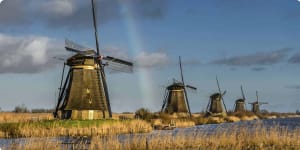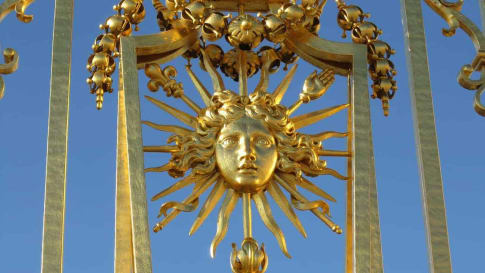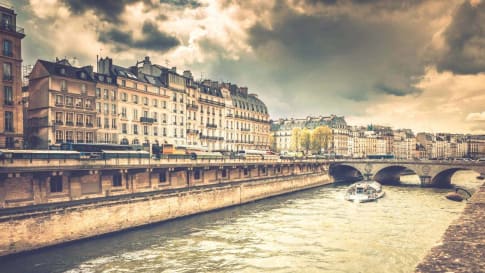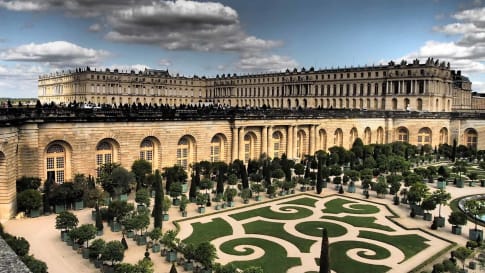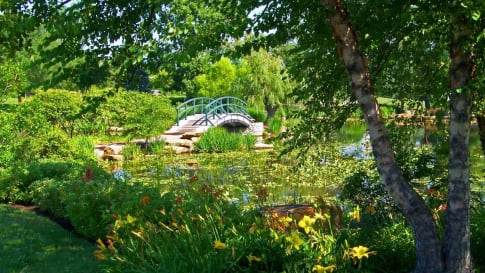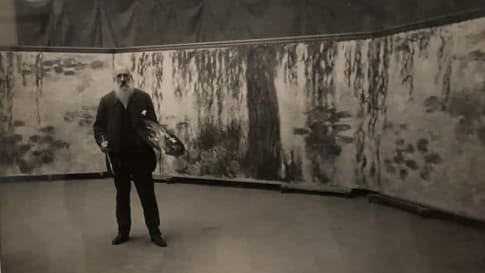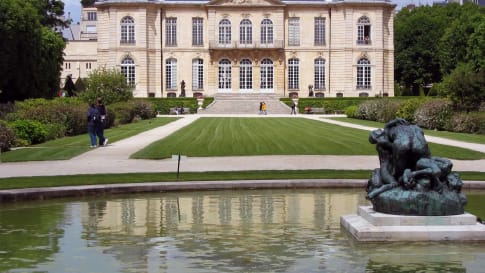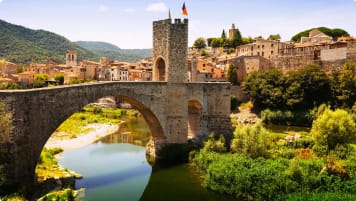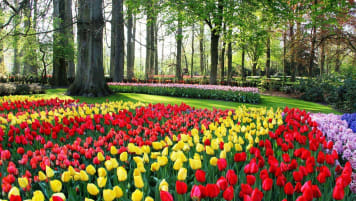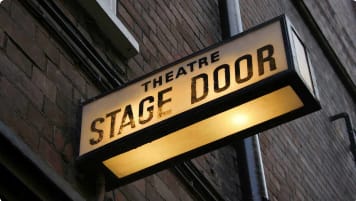Western Europe Chateaux and Gardens | Small Group Tour for Seniors
This small group escorted educational tour combines visits to France, Belgium, Luxemborg, the Netherlands, and Germany. During the 26 days, we will discover a selection of the finest gardens and chateaux in Europe. Our destinations also include several UNESCO World Heritage Sites, for example the royal palaces built by the Prince-Bishop of Cologne in Brühl, Germany.
From A$15,745AUD

Highlights
- 1. Sample varieties of the best Belgian chocolates.
- 2. Visit De Kruidhof, the largest herb garden in the Netherlands.
- 3. Attend a memorial service in Villers-Bretonneux.
- 4. Roam Monet’s Gardens, Bagatelle Rose Gardens, and the Gardens of Annevoie and Keukenhof.
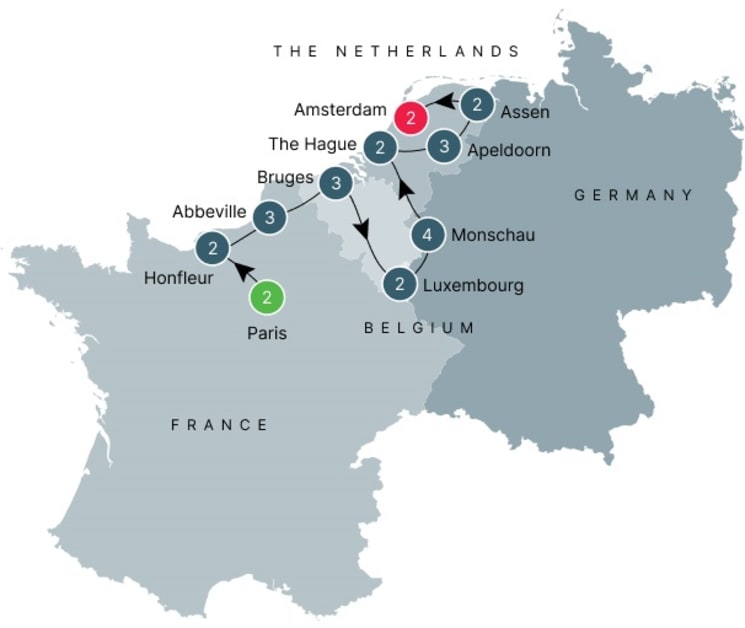
Departure Dates
| Departure Date | Price |
|---|---|
| 07 April 2025 Ends 02 May 2025 • 26 days A$15,745 Twin A$19,945 Single Available | Selected |
Western Europe Gardens Small Group Tour
Odyssey offers easy, convenient, and relaxed escorted small group tours across Western Europe and beyond. We explore Belgium, Luxembourg and France’s fairy-tale natural beauty, its ancient Roman, and Imperial heritage, its World Heritage Sites, and world famous cities, all with some truly spectacular scenery along the way. This and more is all waiting to be explored on one of Odyssey’s small group tours of Belgium or Luxembourg or France, designed for the senior traveller, and led by experienced, and enthusiastic like minded people.
This Western Europe treasures and gardens small group tour combines visits to France, Belgium, Luxembourg, the Netherlands, and Germany. During the 26 days, we will discover a selection of the finest gardens and chateaux in Europe. Your knowledge is extended by professional guides who share their studies of the culture and history of the places visited. Along the way we will cruise through spectacular and dramatic landscapes and sample local cuisine.
Beginning in Paris and ending in Amsterdam, the trip visits France, The Netherlands, Belgium, Luxembourg and Germany, stopping in nine key places along the way. A short tour version is also offered.
Paris
Our group adventure begins in Paris. We enjoy a tour of the Parisian arrondissements (rounded off areas or boroughs) by both foot and bus and explore the Seine and the historic districts of the Left and Right Banks. Then, we visit the Bagatelle Gardens, a landscaped garden dating back to the 18th century. Now a botanical garden of the city of Paris, it is famous for its rose garden and annual international roses contest held since 1907. We stop to view the famous Parc Andrew Citroen, a 35 acre park built on the site of the Citroen factory.
Giverney
Our next stop on our journey is Giverney, where we explore Monet's house and garden. We also visit the important heritage site of Les Andelys. The towns of Great and Little Andelys grew towards each other over centuries to form the present town. In the Middle Ages, Richard the Lionheart (the Duke of Normandy and the King of England) built the Chateau Gaillard on a cliff to protect the country of Normandy from the French Crown. We also visit the arboretum of Harcourt, which ranges over 25 acres and boasts a botanical collection of around 500 species, with the oldest specimens dating back to 200 years. The arboretum, created in 1810, surrounds a vast medieval fortress; the outer wall, moats, and facades of which are still visible.
Honfleur
We will visit Honfleur, one of the pivots of the Celtic Arc extending from Normandy through the west of England and Scotland. The origin of the name Honfleur comes from its Scandinavian landowner "Honna" followed by "flow" which in the Nordic language meant "cove or small estuary." The word eventually became "fjord" in Scandinavian, while in French it evolved into "fleur", which can be found in the name of many small Norman towns: Barfleur, Harfleur, and Honfleur. As early as the 11th century, Honfleur was one of the most important towns in the dukedom of Normandy.
Abbeville
We base ourselves for several nights in Abbeville, an ideal launching point for the natural wonders of the Normandy coast. We make a day tour to Rouen, where we see the Notre Dame Cathedral immortalised by Monet, and take in a memorial service in Villers-Bretonneux, which saw the greatest sacrifice of Australian and New Zealand troops during World War I.
Highlights of our Western Europe Gardens Small Group Tour
Other highlights of this European tour includes a cruise around the harbour of Rotterdam as well as the Moselle River. We visit the famous windmills of Kinderdijk. We also sample some of the best Belgian chocolates and visit De Kruidhof, the largest herb garden in the Netherlands. You will have the chance to make a walking tour through the Bagatelle Rose Gardens, and the Gardens of Annevoie and Keukenhof. Our destinations also include several UNESCO World Heritage Sites, for example the royal palaces built by the Prince-Bishop of Cologne in Brühl, Germany.
Note: This tour was previously known as "Odyssey through the Low Countries or Treasures of Western Europe."
Western Europe treasures and gardens cultural tour is one of more than 70 small group escorted tour offered by Odyssey Traveller each year. These small group tours visit many of Europe's must-see sights and are suited to both senior and mature couples and solo travellers. Our guided tours cater to a range of clients, from relaxed river cruises to mountain hikes. Whatever your travel style, it's likely that we'll have a tour that will suit you.
Garden lovers will be interested in some of our articles: 'Monet's Giverny Garden' and 'The Origins of Dutch Tulip Bulbs'.
To learn more, click here to find out about Odyssey's garden tours! We also offer several multi-country tours devoted to tracing gardens and other cultural sites across Western Europe.
For more details, click the ‘Top 5’ or ‘Itinerary’ buttons above! If you’re keen to experience this tour, please call or send an email. Or, to book, simply fill in the form on the right hand side of this page.
Gallery
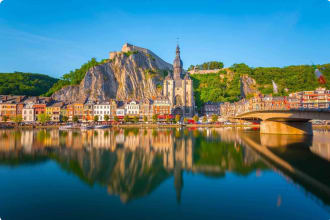
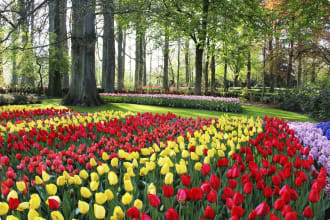
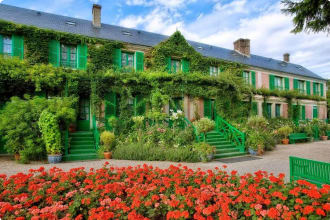
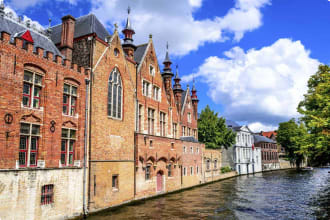


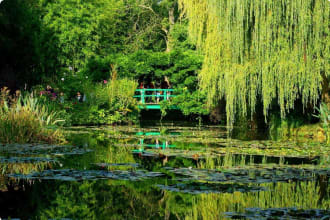

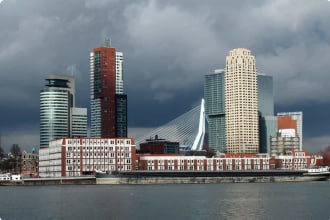
Itinerary
26 days
Day 1: Paris
Accommodation: 1 night at Le Magellan Hotel or similar.
Upon arrival in Paris we will transfer to our hotel individually. Our tour will commence with an orientation and welcome dinner.
(D)
Day 2: Paris
Accommodation: 1 night Le Magellan hotel or similar.
We will tour the pedestrian-friendly city of Paris and its arondissements (rounded off areas or boroughs) by foot and by bus. We will explore the Seine and the historic districts on the Left and Right Banks, then visit the Bagatelle Gardens, a landscaped garden dating back to the 18th century. Now a botanical garden of the city of Paris, it is famous for its rose garden and annual international roses contest held since 1907. We will stop to view the famous Parc Andrew Citroen, a 35 acre park built on the site of the Citroen factory.
(B)
Day 3: Honfleur
Accommodation: 1 night All Seasons Honfleur or similar.
Our next stop is Giverney, where we will explore Monet’s house and garden. We will also visit Les Andelys, where Great and Little Andelys grew towards each other over the centuries to form the present town. Given its strategic position, Richard the Lionheart, the Duke of Normandy, and the King of England built Château Gaillard on a cliff to protect the duchy and its capital, Rouen, from the French Crown.
We will also visit Harcourt, whose arboretum ranges over 25 acres and boasts a botanical collection of around 500 species, with the oldest specimens dating back to 200 years. The arboretum, created in 1810, surrounds a vast medieval fortress. The outer wall, moats, and facades of the fortress can still be seen.
We will visit Honfleur, which is one of the pivots of the Celtic Arc extending from Normandy through the west of England and Scotland. The origin of the name Honfleur comes from its Scandinavian landowner “Honna” followed by “flow” which in the Nordic language meant “cove or small estuary.” The word eventually became “fjord” in Scandinavian, while in French it evolved into “fleur”, which can be found in the name of many small Norman towns: Barfleur, Harfleur, and Honfleur. As early as the 11th century, Honfleur was one of the most important towns in the dukedom of Normandy.
(B,D)
Day 4: Honfleur
Accommodation: 1 night All Seasons Honfleur or similar.
Today we will see Cambremer and its park at Jardin du Pays d’Auge. The park consists of a well-maintained series of gardens set around a 17th century farm and other buildings, as well as 2 small museums (one dedicated to old tools and the other to the boulangerie). Located a few minutes from Cambremer, we will visit Crevecoeur and its chateau, and then we will travel to Victot Pontfol, heart of the Calvados area of Normandy. We will explore the archetypical Normandy village of Beuvron-en-Auge by foot.
(B,D)
Day 5: Abbeville
Accommodation: 3 nights at Mercure Abbeville or similar.
We will visit Rouen to see the Notre Dame Cathedral, the abbey church of Saint-Ouen, Saint Maclou church, and the Normandy parliament building. We will also visit the Gros Horloge and the Aître St Maclou (the Hotel de Bourgthéroulde), which are among the finest examples of Renaissance buildings in Europe. Apart from the splendour of its architecture, Rouen is renowned for many famous historic, literary, and artistic characters, including Richard the Lionheart, Joan of Arc, Pierre Corneille, Gustave Flaubert, Guy de Maupassant and, of course, Claude Monet. Rouen is a truly a museum city. The fine arts museum is home to the second most important collection of Impressionist works in France, while the Ceramics Museum or the Secq de Tournelles metalwork museum both offer unique collections unrivaled anywhere in the world. The Natural History Museum and the Museum Gros Horloge have both recently been entirely renovated.
We will also explore Abbeville, which is a great base for our exploration of the Picardie coastline which abounds with bird sanctuaries, dunes, forests and marshlands. Despite being badly bombed during World War II, Abbeville is still full of architectural delights such as the Eglise Saint-Sepulcre, which dates back to the 15th century, and the Collegiale Saint-Vulfran, one of the oldest belfries, dating back to the 13th century. The Musee Boucher-de-Perthes is also worth a foray and has an interesting collection of prehistoric artefacts and murals.
(B,D)
Day 6: Abbeville
Accommodation: Mercure Abbeville or similar.
Villers Bretonneux in the Somme is one of the most poignant places in the world for Australians, as many Australian soldiers were deployed to the region in WWI. Given its strategic position, some historians believe the battle fought there changed the course of World War I. Local gratitude in Villers Bretonneux is particularly strong, as many Australian troops lost their lives recapturing the town from German forces. We will see the 32 metre Memorial Tower which carries the names of more than 11,000 Australian soldiers who have no known grave. We will also visit the town’s school, which was rebuilt with the help of donations from Victorian schoolchildren in the 1920s.
We will then visit Amiens, another World War I site, to see floating gardens, Jules Verne’s house, and the Art and Archaeology Museum’s extensive collection of Egyptology. We will visit the La Boiselle Lochnagar mine crater on the 1916 Somme battlefields in France, which is the largest man-made mine crater created in World War I on the Western Front. Our next stop is the village of Pozieres, another strategic location on a ridge of high ground between Albert and Bapaume. We will enjoy refreshments at Le Tommy Café with traditional English fare and reflect on our valiant countrymen.
(B,D)
Day 7: Abbeville
Accommodation: Mercure Abbeville or similar.
We will visit Bullecourt, another important site from WWI. Bullecourt was located on the Hindenburg Line defenses, and was attacked by Australian troops on 11 April 1917, resulting in great losses. We will also see the Thiepval Memorial, which carries the names of 72,194 officers and men of the United Kingdom and South African forces. These men died in the Somme battle sector before 20 March 1918 and have no known grave. Over 90 percent of those commemorated on the Thiepval Memorial died in the 1916 Battles of the Somme between July and November 1916.
(B,D)
Day 8: Bruges
Accommodation: 3 nights at Ter Brugge Hotel or similar.
We will see St. Valery sur Somme’s upper town, which is a fine example of a medieval citadel. The Courtgain, set behind the harbour, is where sailors lived in their little, brightly-painted, close-set cottages. We will visit the Picardie Museum, which recreates life in Picardy from before the age of the motor and displays of a score of different traditional crafts. We will also visit a herbarium (or medieval garden) next to the ramparts which has a fascinating mixture of simple flowers, rare vegetables, and of course the plants of the Picardy shore. Our next stop will be the famed gardens of Sericourt, which was the winner of the “Best Park in France 2005” prize. This large garden, which covers 4 hectares, has a series of garden “rooms” and alleys linking different areas. The “rose cathedral,” a massive rose tunnel, is a highlight. The geometric garden is a kind of parterre filled with hemerocallus, asters, and other perennials which are particularly beautiful in the autumn.
Next we will see Fromelles, which is another important site for Australians associated with WWI. The Australian 5th Division, along with the 61st British (South Midland) Division, attacked here on 19 July 1916. The Australian attack here was their first serious battle in France, and the only one in which they achieved no success. Our next stop is Pheasant Wood Cemetery, where the remains of 250 British and Australian soldiers were recovered. So many remains were discovered that the Commonwealth War Graves Commission (CWGC) created a new cemetery for their reburial, the first new war graves cemetery to be created by the CWGC since the end of the Second World War. We will visit Australian Memorial Park, which commemorates the bravery of those who went out to rescue the wounded of Fromelles. In the middle of the park is a statue sculpted by Peter Corlett of Melbourne which depicts Sergeant Simon Fraser. Our last visit for the day is Hitler Bunker, which is where it is rumoured that Hitler was stationed.
(B,D)
Day 9: Bruges
Accommodation: Ter Brugge Hotel or similar.
Bruges is often considered the world’s most perfectly preserved medieval city, with its cobbled streets and tinkling carillions. Bruges is the capital and largest city in the province of West Flanders in Belgium. Bruges became one of the most prosperous cities in Europe circa 1300, but began losing its economic strength around 1500 when the Zwin Channel started silting up, preventing access to the sea. At this time people began to abandon the centre, which helped to preserve its medieval features. Today Bruges is once again a thriving community with a population of 120,000 people, and the medieval centre is one of the most beautiful in Europe.
(B)
Day 10: Bruges
Accommodation: Ter Brugge Hotel or similar.
The Belgian city of Antwerp is perhaps one of the most underrated cities in Belgium. The historic old city centre with its charming cobblestone lanes has tourist attractions such as Belgium’s most glorious cathedral, the Cathedral of Our Lady (Kathedraal), which resides on the Groenplaats. This part of Antwerp has remained unchanged for many centuries.
(B)
Day 11: Luxembourg
Accommodation: 2 nights at Park Inn by Radisson or similar.
Brussels is quickly gaining a reputation as one of Europe’s must-see destinations, with its small town charm, trendy bars and restaurants, fabulous food, great nightlife, fantastic shopping, numerous museums, and other attractions including the diverse and interesting exhibitions and festivals organised there every year. Brussels is also gaining a reputation as a mecca of style, art, and design. Home-grown Belgian designers are rapidly gaining global acclaim. The streets of Brussels feature art and architecture created from an unmistakably Belgian point of view that cannot be replicated.
We will visit Annevoie and its gardens. The gardens’ designer, Charles-Alexis de Montpellier, was a local iron merchant. Creating the gardens was no easy job. His first task was to dig a 400 metre long canal at the highest point of his 28 hectare grounds, and fill it with water from the nearby Fonteny spring. After that he constructed a complex network of inter-connecting underground channels running from the canal. He then had to excavate about 20 pools and ponds and adorn them with over 50 fountains, cascades, and waterfalls. It took him nearly 20 years to finish, but by 1776 Annevoie Gardens was complete, and has remained functional ever since.
(B,D)
Day 12: Luxembourg
Accommodation: Park Inn by Radisson or similar.
Luxembourg is famous for its spectacular setting on a rocky outcrop, which explains its nickname, “Gibraltar of the north.” It’s been the capital of the Grand Duchy since medieval times, and has now become a cosmopolitan shopping centre featuring prestigious European brands. Luxembourg citizens, who are very keen on maintaining a well-manicured environment, coined the slogan “Luxembourg, the green heart of Europe.” We will see the Grand Duchy of Luxembourg. So many castles dot the rural countryside that one valley has been re-christened the Valley of Seven Castles. We will visit the majestic castle of Vianden, which is just north of the valley.
(B)
Day 13: Monschau
Accommodation: Hotel Graf Rolshausen or similar.
Founded as Augusta Treverorum in 16 BC during the reign of Augustus Caesar, Trier is Germany’s oldest city. We will see the Porta Nigra, which is the best preserved city gate from antiquity. Our next stops are the amphitheatre, the famous Imperial Thermal Baths, remnants of the St. Barbara Roman Baths from the 2nd century and, just as old, the Roman Bridge, which is still part of a main road into the city.
We will see the Gothic Cathedral of St. Peter – the oldest in Germany – and the Church of Our Lady, which is connected to the cathedral by a cloister. Trier’s other sights include medieval Hauptmarkt square and the Steipe building, the Red House, St. Gangolf’s Church, the carved stone cross, St. Peter’s fountain, Judengasse lane, the Benedictine Abbey of St. Matthew, Frankenturm tower, and Jerusalem tower. The Simeonstift museum is a good place to admire an impressive model of Trier, while the Rhenish State Museum contains the Neumagen wine ship, historical finds from antiquity, and mosaic floors. We will also visit The Karl Marx House.
From Trier we will take a cruise vessel along the Moselle to Bernkastel-Kues, a winegrowing centre on the Middle Moselle in Germany. The town is a state-recognised health resort (Erholungsort), seat of the Verbandsgemeinde of Bernkastel-Kues, and birthplace of one of the most famous German polymaths, the medieval churchman and philosopher Nikolaus von Kues. We will visit Cochem, where legend, folklore, and a rich web of history is woven into every street. We will also visit Eltz, which is a sheer, Rhine-steepled medieval castle nestled in the hills above the Moselle River between Koblenz and Trier. It is still owned by a branch of the same family that lived there in the 12th century, 33 generations ago. The Rübenach and Rodendorf families’ homes in the castle are open to the public. The Palace of Bürresheim, the Castle of Eltz, and the Castle of Lissingen are the only castles on the left bank of the Rhine in Rhineland-Palatinate which have never been destroyed.
Our last stop for the day is Monschau, which has many preserved half-timbered houses and narrow streets which have remained nearly unchanged for 300 years, making the town a popular tourist attraction.
(B,D)
Day 14: Monschau
Accommodation: Hotel Graf Rolshausen or similar.
We will take a detailed walking tour of Hautes Fagnes, an enormous nature park.
(B)
Day 15: Monschau
Accommodation: Hotel Graf Rolshausen or similar.
Brühl is a town in the Rhineland of Germany. Located in Rhein-Erft-Kreis, 20 kilometres south of Cologne city centre and at the edge of Naturpark Kottenforst-Ville Nature Reserve, Brühl features many beautiful castles. Brühl was the residence of the Prince Bishops of Cologne, and in the 18th century the Prince Bishop Clemens August replaced a former ruined castle and built the Augustusburg and Falkenlust palaces near the city centre. Today both are listed as UNESCO – World Heritage Sites. Until 1990, Augustusburg Palace was used by the West German government to receive foreign heads of states visiting West Germany. In addition to its many castles, the amusement park Phantasialand is located in Brühl. We will visit the Max-Ernst-Museum, which was opened in 2005. It displays sculptures and paintings of the surrealistic artist Max Ernst, who was born in Brühl.
Our next stop will be Cologne, which is one of the oldest cities in Germany which has been drawing visitors since at least the year 50 AD, when it was officially founded as the Roman outpost of Colonia. Today the city’s big attractions are the ancient cathedral, miraculously maintained intact after the city was intensively bombed during World War II, as well as not the Rhine River. Eau de cologne was invented here in 1709. Our last visit for the day will be the city the Germans know as Köln, which is celebrated for its native beer called Kölsch, and is often described as the city that most of all defines the ever-present River Rhine.
(B)
Day 16: Monschau
Accommodation: Hotel Graf Rolshausen or similar.
We will have an extended morning for our party to explore the Monschau historical Old Town, located amidst the famous hedges and impressive scenery of the surrounding Venn region. As a stroll through its winding alleys will soon reveal, the romantic half-timbered houses offer a rich mosaic of art, culture, and museums.
(B)
Day 17: The Hague
Accommodation: 2 nights at Ibis Den Haag Centre hotel or similar.
Aachen is just over the border from Holland, sometimes referred to as the Spa of Kings. We will visit Aachen Cathedral, which is the coronation church of more than 30 German kings. It is home to the marble tomb of Charlemagne, founder of the Holy Roman Empire. The tomb is decorated with a relief of the abduction of the Roman goddess Proserpina. The cathedral also features a silver and gold bust of Charlemagne and the medieval Cross of Lothair (990 AD), which is encased in gold and silver and encrusted with gems and pearls.
Aachen is known for the Charlemagne Prize, for politicians who advance European unity. Aachen is also known for the Aachen Printen, a 500 year old local product which is still sold by bakeries. It is a hard, spicy biscuit, made in a mould and bearing an imprint of a person or scene. Aachen’s Drielandenpunt is also on our schedule. It is a border tripoint, where the Netherlands, Germany, and Belgium meet. It is a popular visitor attraction, offering chips, beer, its own bus service and play facilities for children.
(B,D)
Day 18: The Hague
Accommodation: Ibis Den Haag Centre hotel or similar.
Rotterdam is known for its harbour, which we will explore in a cruise. It is the largest port in Europe, known for its skyline. In World War II, large parts of Rotterdam were destroyed, but the city has been rebuilt in an innovative modern style. The many glass and steel high-rises give Rotterdam its nickname “Manhattan by the Maas.”
Our next visit for the day will be the Hague, which is the regal home of Dutch royalty. It is an artistic, ornate city of palaces, architectural wonders, and wide, tree-lined boulevards. It is at the heart of Europe’s news stories, a small place brought to fame by the development of the EU, and now populated by a multinational plethora of important legal and human rights staff. The city is the centre of the UN criminal justice system. We will tour the Peace Palace, which is the Court of Human Rights, a site of many protests. The Hague is also a centre for art, typically hosting plenty of open-air sculpture exhibits and photo exhibitions. The Hague also features magnificent beaches, nightlife, casinos, an abundance of museums, and a 19th century covered shopping street, “the Passage.”
We will visit Tomato World, which can be best compared with a high-tech showroom. It is a joint effort by partners active within the Dutch greenhouse farming sector. Tomato World creates a platform for cooperation, education, and knowledge exchange, with a 1,500 square metre greenhouse containing 50 varieties of tomatoes in its greenhouse, as well as a centre for information and education.
(B)
Day 19: Apeldoorn
Accommodation: Hampshire Hotel or similar.
We will have a tour of the plant bulb sector in Keukenhof. More than 7 million tulips, daffodils, and hyacinths bloom in the park in spring. Keukenhof is the world centre of flower arranging, and leading Dutch flower arrangers put the exhibitions in place.
Near Utrecht, we will visit De Haar Castle, which is the ideal image of a medieval fortress, with towers, ramparts, canals, gates, and drawbridges. The castle was entirely restored and partially rebuilt in the late 19th century, and it rises like a real fairy-tale castle from a park with large trees, surrounded by old gardens and ponds.
Apeldoorn is our destination for the night. It is known as the place of exile for Kaiser Wilhelm after World War I. Apeldoorn sits on the edge of Hoge Veluwe National Park, the Netherlands’ largest privately owned conservation area.
(B,D)
Day 20: Apeldoorn
Accommodation: 3 nights at Hampshire Hotel or similar.
We will visit Bingerden Gardens, which are on an old fortified farm. These gardens are famed for their topiary and for the ingenuity of their potagers.
(B)
Day 21: Apeldoorn
Accommodation: Hampshire hotel or similar.
Otterlo is the home of a magnificent amalgamation of art, architecture, and nature. Amidst unspoilt natural surroundings, the Kröller-Müller Museum’s collection centres on the extensive collection of works by Vincent van Gogh and the world famous sculpture garden.
Appelton Gardens in the Netherlands features a permanent exhibition park for show gardens that features more than 200 astounding model gardens. Exhibitors range from large suppliers in the horticultural and construction trades, to various landscape firms, to individual designers.
(B)
Day 22: Assen
Accommodation: 2 nights at Hotel de Jonge or similar.
Our first stop today will be the village of Diepenheim, where we will see the 17th century Warmelo Castle, which at one time was the home of Princess Armgard, Prince Bernhard’s mother. It is well known for its surrounding gardens, which were created in the 20th century.
We will see the Ada Hofman Aquatic gardens in Loozen, which feature approximately 30 gardens and 50 ponds. The gardens have the largest collections of plants, shrubs, and trees in Holland, totaling approximately 3,000 different species. There are also many animals in the gardens, including grass snakes, birds, frogs, blind worms, fish, salamanders, 22 species of butterflies, and lizards. The green frog population here is the largest in the Netherlands. The gardens also have a roof garden with a pond. A 600 square metre garden has been laid out at a height of 3 metres on the roof of Ada Hofman’s private house.
(B,D)
Day 23: Assen
Accommodation: Hotel de Jonge or similar.
We will visit Menkemaborg Gardens. The house in the gardens, which has been almost unchanged since the 18th century, has a moat which dates from the 14th century. The garden plan has been restored from 1705. The gardens have rectangles of clipped boxes enclosing flowering plants known to have been popular in the 18th century (iris, peony, aquilegia etc). We will see a walled garden, trellis arches, a rose tunnel, and a vegetable garden.
(B)
Day 24: Amsterdam
Accommodation: 2 nights at Eden Hotel or similar.
We will see Groningen, which has a magnificent and varied countryside ideal for cycling and walking. The most famous Dutch walking track, Het Pieterpad, starts in Pieterburen, which is our next stop. This town is also known for its Seal Rehabilitation and Research Centre, Lenie ‘t Hart. The nature areas of the most northeastern province of the Netherlands are also well worth a visit.
Next we will travel onward to Buitenposthom, which is Europe’s most extensive herb garden. “De Kruidhof” was established in 1930 as an experimental station for vegetables and fruit for the very practical purpose of trying to better the dismal lives of the farmers in the area and so it also became a garden for “medicinal, aromatic and similar plants.” Under the University of Groningenit, De Kruidhof developed into a major research centre, categorising herbs into their medicinal categories.
We will see the Zuiderseemuseum at Enkhuizen, then visit Amsterdam, the most storied of Dutch cities with its diamond-cutters, tulips, canals, and ultra- liberalism that set the pace for the rest of Europe. We will take an evening canal cruise.
(B,D)
Day 25: Amsterdam
Accommodation: Eden Hotel or similar.
Amsterdam is the heart of the world, with green roofs and living walls which are now viewed as a common practice. We will visit a number of roof gardens, which have a myriad of benefits recognized by project developers and housing associations, such as water retention, improved air quality, and biodiversity.
(B,D)
Day 26: Amsterdam
Our tour will conclude today after breakfast.
(B)
Tour Notes
- Group size is limited to 18.
- Itineraries may change if flight schedules, site availability, and other inclusions have to be amended prior to departure.
Includes / Excludes
What’s included in our Tour
- 25 nights of hotel accommodation.
- 25 breakfasts and 14 dinners.
- Transport in comfortable and modern coaches.
- Gratuities and necessary tips.
- All excursions, entrance fees, and local guides as indicated
- Services of a tour leader for the duration of tour.
What’s not included in our Tour
- Lunches.
- International airfares and departure taxes.
- Comprehensive travel insurance.
- Items of a personal nature such as telephone calls and laundry.
Participants must be able to carry their own luggage, climb and descend stairs, moderate walking on uneven surfaces between 3 - 5 kilometers per day. Suitable for most fitness levels
Book now
Make it a private tour
Easing your journey
Crossing international borders with restrictions
The list of requirements to travel internationally has changed and will continue to change for several years. Odyssey is here to assist you in managing your way through these requirements:
For more information see our Crossing international borders with restrictions page.
Book With Confidence
If less than 30 days before your tour starts you are unable to travel as a result of Government travel restrictions, Odyssey Traveller will assist you with a date change, provide you with a credit or process a refund for your booking less any non-recoverable costs.
See Terms and conditions for details.
Peace of Mind Travel
The safety of our travellers, tour leader, local guide and support staff has always been our top priority and with the new guidelines for public health and safety for keeping safe for destinations around the world, we’ve developed our plan to give you peace of mind when travelling with us.
See Peace of Mind Travel for details.
Reading List Download PDF
Paradise on Earth: The Gardens of Western Europe
Gabrielle Van Zuylen
Traces the history of gardens from Mesopotamia through the cloister gardens of the Middle Ages and the labyrinths of the Renaissance up to the urban parks of today, with a listing of great European gardens and a glossary.
Claude Monet: Life and Art
Paul Hayes Tucker
This lavishly illustrated book presents the first complete overview of the life, art, and times of the quintessential Impressionist. Tucker, one of our foremost authorities on Monet, offers a striking new view of the artist, showing him to be a far more complicated figure than previously acknowledged, fiercely competitive and ambitious, as well as sensitive and inventive.
Monet's Garden: Through the Seasons at Giverny
Vivian Russell
A new paperback edition of Vivian Russell's much-admired exploration of Claude Monet's garden at Giverny. This book ventures behind the scenes to chart the history of one of the world's most famous gardens, linking the world of Monet the artist with Monet the gardener. Four chapters trace the garden through the changing seasons, paying special attention to the atmosphere and light that so preoccupied Money and became the focus of his life as a painter. Throughout, the work done by Giverny's present-day gardeners is analysed to reveal the practical techniques of maintaining the most-visited garden in the world.
History of Western Europe
James Robinson
By far one of the greatest history books ever written, James Robinson’s classic of Western European history is an absolute must-read for anyone seeking a greater understanding of the power struggles and armed conflicts that formed the Europe, and the world, of today. Spanning over a thousand years, from the stunning fall of the western Roman Empire to the rise of the German industrial/military empire on the eve of World War I, Robinson weaves a beautiful, easy to read historical narrative of the major events and figures of European history. From Philip Augustus to Prince Metternich, from Charles Martel to the Holy Roman Empire and the Papal States, James Robinson’s heavily illustrated history takes you on a journey of several lifetimes, and aims to leave you better and more informed than when you began.
